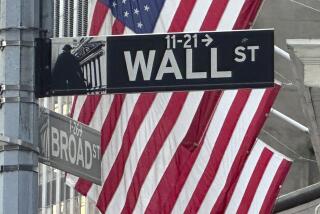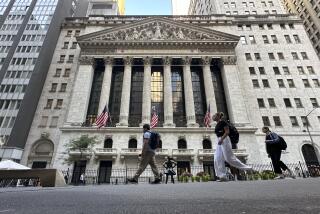Economic Activity Declines in April
The U.S. index of leading economic indicators fell during April, the first drop in seven months, pointing to a moderating pace of expansion.
Lower stock prices, rising jobless claims and a dip in consumer confidence contributed to the 0.4% decline in the Conference Board’s index, a gauge of the economy’s likely performance over the next three to six months. The index had risen 0.1% in March, and April’s decrease was twice what analysts had forecast.
The index last fell in September, when terrorists attacked the World Trade Center and the Pentagon.
“The signal from the indicators is that the recovery is developing quite slowly,” said Ken Goldstein, a Conference Board economist. “The recovery in the industrial core remains weak. The consumer sector has seen income growth cut by employment cutbacks and moderating growth in wages.”
Five of the 10 indicators the New York group uses to calculate the index pushed it down. Besides a drop in consumer confidence and stock prices, and increased jobless claims, the index was pulled down in April by a narrower spread between the overnight bank lending rate and the yield on the 10-year Treasury note, and a drop in the money supply.
Rising building permits, longer vendor delivery times, which suggest increased demand, and an increase in manufacturers’ new orders for nondefense capital goods limited the decline. There was no change in the manufacturing workweek or new orders for consumer goods.
The Conference Board’s index of coincident indicators, a gauge of the current state of the economy, rose 0.2% in April after rising 0.1% in March. The index of lagging indicators fell 0.4% last month, compared with a 0.9% decline the prior month.
More to Read
Inside the business of entertainment
The Wide Shot brings you news, analysis and insights on everything from streaming wars to production — and what it all means for the future.
You may occasionally receive promotional content from the Los Angeles Times.










